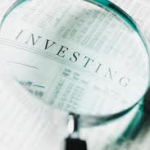 In 2013, asset class performance was straightforward: stocks were up, bonds were down. The riskier and less “bond-like” the stock, the more it went up. While dividend yielding stocks didn’t lose money (SDY was up 25% for 2013), they underperformed the market as a whole (SPY was up 30%), and they definitely did worse than high risk stocks like Tesla (TSLA), Pandora (P), and Facebook (FB).
In 2013, asset class performance was straightforward: stocks were up, bonds were down. The riskier and less “bond-like” the stock, the more it went up. While dividend yielding stocks didn’t lose money (SDY was up 25% for 2013), they underperformed the market as a whole (SPY was up 30%), and they definitely did worse than high risk stocks like Tesla (TSLA), Pandora (P), and Facebook (FB).
So far in 2014, the story is not so clear cut. Different asset classes have not performed in such uniform ways. While high fliers of 2013 like P and Twitter (TWTR) are substantially down, TSLA and FB are up. Also, asset class divergences are not playing out in 2014. For instance, dividend payers are not losing out to the market, as both SPY and SDY are up a little over 4% for 2014.
The implications of this are obvious and unsurprising. The obvious implication is that investors need to be more selective when investing now than they were last year. Many who felt confident of their stock picking abilities in 2013 are finding themselves frustrated at surprise underperformance in 2014, even though the index is much easier to beat this year since stocks are up only modestly compared to last year.
How can investors make that selection? While the systemic risk of macroeconomic conditions is always a concern, investors need to take a closer look at company fundamentals and understand their cash flow, revenue growth, and earnings potential on various time horizons before investing. It was easy to make money without doing this due diligence and basic analysis last year; this year is different, and 2015 will likely be even more different for one reason: the Federal Reserve.
This trend of diverging and more differentiated asset performance is not a surprise because we are witnessing the equity response to the Federal Reserve’s tapering of its bond buying activities. While it is a bit counter-intuitive, this bond buying has helped equities substantially, because it has caused bond yields to fall, pushing investors into higher-risk assets like common stock. This paradoxically made demand for bonds to fall, pushing their prices down and yields up. Many investors, including many professional ones, have lost substantial amounts of money by misunderstanding this basic concept.
While picking individual outperformers has become important for the stock market in 2014, it has become less of an issue in the bond market, which has seen incredible growth and inspired bubble-like headlines at Bloomberg and elsewhere. With long-term bonds up more than stocks so far for 2014 (TLT is up over 10%), investors are trying to understand just how much more demand there is for bonds. Many are still pessimistic about bonds, pointing to an improving economy in the U.S. and in Europe as likely drivers of stronger inflation. But the ECB’s recent data suggests that, in fact, inflation is slowing.
For the rest of the year, investors will need to keep an eye on both overall economic growth rates and the performance of individual companies. While this is always true, the need is getting stronger, as casual investors and more gambling like activity will yield greater disappointments in the future than it has in the recent past.
